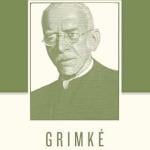
Last night I saw Helvetica, a new documentary by Gary Hustwit — here making his first directorial effort, after producing films like the Wilco pic I Am Trying to Break Your Heart — and I saw it with the best possible audience: a crowd of graphic designers.
The fact that I saw the movie was a happy fluke. My wife happened to get home a bit earlier from the picket line than I expected, so I decided to go see a matinee. As I left the theatre, I saw a huge line-up, so I asked what it was for, and I was told that the Society of Graphic Designers had arranged a special screening of Helvetica — a film so obscure that it would almost certainly not come back to Vancouver. I had heard about the film, which was made to coincide with the 50th anniversary of the invention of this font, so I was definitely interested in it — but I was told that the screening had sold out. And then, as I began to walk away, I noticed that an old high-school friend — who, like my wife, works for the public library — happened to be standing in the line-up for this film. And then, as we gabbed about life in general, he mentioned that he happened to have an extra ticket, because his wife had not been able to come to the screening — so would I be interested in seeing the film with him? (And then, after the movie itself, I bumped into someone from church at the reception. Small, small world.)
The film was fun. Some of the typographers and graphic designers who were interviewed for the film get really passionate and animated about their profession, and I find being in the presence of such enthusiasm exhilarating, even when the enthusiasm is directed at something I am only partially familiar with.
One of the more interesting issues explored by the film is the way that Helvetica, a Swiss font created in 1957 and defined by its neutrality and matter-of-factness, was conceived as an expression of post-war “idealism” but has since come to be identified with corporate culture. Is it a “capitalist” font or a “socialist” font? Personally, I think the distinction is a little pointless, inasmuch as modern capitalism and modern socialism are both rooted in a modernist tendency towards massification and conformity.
And oh, did the sequence on the short-lived “grunge design” of the early 1990s bring back memories. I remember arguing with a few people about that when I was an editor at The Ubyssey; to them, it seemed funky and edgy and hip, but to me, it reflected an utter contempt for the text, and thus for both the writer and the reader. So I was not at all surprised to learn from this film that Ray Gun designer David Carson once laid out an entire article in Zapf Dingbat, thus rendering it completely unreadable. (It’s funny when it happens to someone else, but if that ever happened to me…)
The film was followed by a Q&A; with director Gary Hustwit, a local graphic designer named Jim Rimmer, and local author Douglas Coupland — who is apparently a big fan of Helvetica and has insisted that it be used on the covers of his last several books. His first words, if memory serves, were, “I was at the Garamond documentary next door, and there were only two or three people there.” The hundreds of Helvetica viewers chuckled. And you have to love any crowd that would share a little in-joke like that.












